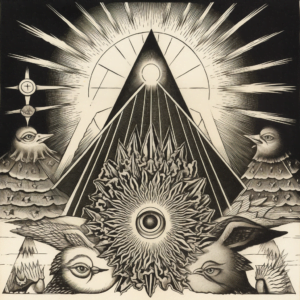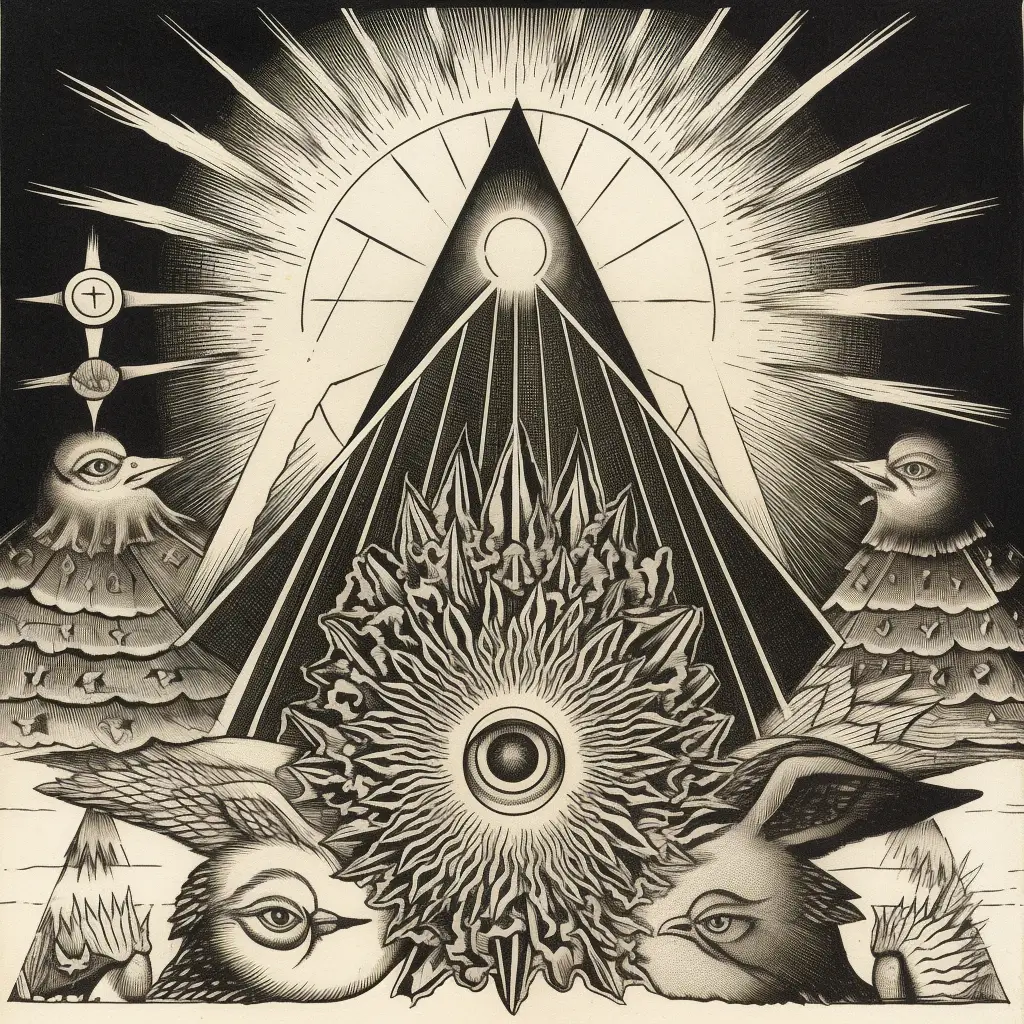
Symbolism is when a writer uses an object, person, place, or action to represent something else, usually an idea or emotion. For example, in the Harry Potter series, the sorting hat is a symbol of the power of choice.
Or if someone says they’re feeling “under the weather” they’re actually not talking about the weather at all – they’re using a symbol for feeling sick. So you see, symbolism isn’t only for literature and fancy art – it’s for everyday life too!
What’s the Big Deal with Symbolism?
Imagine a world where everything has a hidden meaning, a secret message waiting to be discovered. That’s the world of symbolism! Symbols are everywhere, from traffic lights and emojis to the mascots of sports teams. Just like these everyday examples, authors use symbolism to communicate complex ideas, emotions, or themes in their writing. In literature, symbols can be anything from objects and animals to colors and names.
Decoding Symbolism in Writing: How Does It Work?
Symbolism in writing involves using words or images to represent something beyond their literal meaning. It can be as broad as representing a central theme or as specific as hinting at a character’s personality. Symbols help create vivid imagery in the reader’s mind and often work hand-in-hand with other literary devices like metaphors, personification, and allegory.
An allegory is a story where everything is symbolic, like George Orwell’s “Animal Farm.” But more often, symbolism is woven into a story that can also be read literally.
Spotting Symbolism: Tips and Tricks
To identify symbolism, look for images or descriptions that seem to have deeper meaning or are emphasized by the author. Sometimes it’s obvious, like a character with a snake tattoo symbolizing deception. Other times, it’s subtle and might only be noticed on a second read-through.
When to Use Symbolism
Symbolism is used when plain language isn’t enough to convey the author’s message. It can make descriptions more powerful and enhance the reader’s understanding of a story, poem, or essay. However, symbolism is rarely used in academic writing, unless analyzing the symbolism in a piece of literature.
Different Ways to Use Symbolism
Here are some common ways authors use symbolism in their work:
Color symbolism – Colors can evoke emotions and have psychological associations. For example, red might symbolize passion or anger, while blue could represent tranquility.
Animal symbolism – Animals often have cultural associations or symbolize specific traits. For instance, a lion might represent strength or royalty, while a fox could symbolize cunning.
Examples Galore: Symbolism in Action
Here are some examples of symbolism involving colors, animals, and common objects:
- Butterfly = metamorphosis
- Lion = power, majesty
- Swan = elegance
- Owl = wisdom, knowledge
- Apple = temptation
- Chains = bondage
- Crown = authority
- Ring = eternity
- Scales = balance, justice
- Skull and crossbones = danger, toxicity
Remember, symbolism can vary across cultures, so it’s essential to consider your audience when using symbols in your writing.
Symbolism in Practice
Effective symbolism should strike a balance between being too obvious and too subtle. Start by determining what message you want to convey, then choose symbols that fit your theme or story.
Use allusions or personification to weave symbolism into your writing, but be cautious of “false symbolism” – when readers mistakenly interpret something as symbolic when it’s not.
Symbolism Everywhere
Symbolism isn’t limited to literature. It can be found in architecture, historical events, and more. Some examples include:
- The green light in F. Scott Fitzgerald’s “The Great Gatsby,” symbolizing wealth and ambition
- NASA’s Apollo missions, named after the Greek god Apollo, symbolizing humanity’s exploration of the cosmos
- The Church of the Light in Japan, using light through a cross-shaped opening to represent faith
Frequently Asked Questions about Symbolism
Q: What is symbolism?
A: Symbolism is the use of words or images to represent ideas, people, objects, or events beyond their literal meaning. It’s a powerful tool for authors to communicate complex themes or emotions.
Q: How does symbolism work?
A: Symbolism works by substituting one distinct image for another concept, creating a deeper, more meaningful connection for the reader. It shows, rather than tells, and allows readers to interpret the author’s message on a figurative level.
Q: What are some examples of symbolism?
A: Some common examples of symbolism include:
- Red roses symbolizing love
- A rainbow symbolizing hope
- A dove symbolizing peace
- A lion symbolizing power and royalty
- Chains symbolizing bondage or restriction
Remember, symbolism can vary across cultures, so it’s essential to consider your audience when using symbols in your writing. Symbolism is a versatile and powerful storytelling tool that can add depth, complexity, and emotional resonance to any narrative. By skillfully incorporating meaningful symbols into a story, writers can create captivating narratives that connect with readers and leave a lasting impression.
If you’re thirsty for more writing knowledge, head over here to learn all 74 literary devices.





